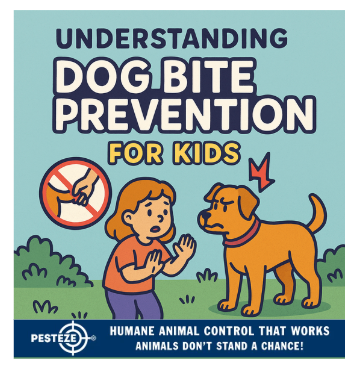UNDERSTANDING DOG BITE PREVENTION FOR KIDS

UNDERSTANDING DOG BITE PREVENTION FOR KIDS
SUMMARY
Children are the most common victims of dog bites, but most incidents are preventable. This guide teaches simple, effective ways to keep kids safe while helping them build positive relationships with dogs.
FEATURES
-
Teach respect: Show kids how to approach dogs calmly.
-
Supervise always: Never leave children and dogs unsupervised.
-
Recognize warning signs: Growling, stiff body, or retreating.
-
Set boundaries: No pulling ears, tails, or climbing on dogs.
-
Safe play rules: Avoid roughhousing and chasing games.
-
Know what to do: Teach kids to stand still or walk away calmly.
GUIDE DESCRIPTION
Dogs are beloved family companions, but they can also pose risks if children do not know how to interact with them properly. Since kids are naturally curious and energetic, it’s crucial to understand dog bite prevention for kids to ensure safety and harmony at home and in the community.
The first and most important step is to teach respect. Kids should learn to approach dogs slowly, allow the dog to sniff them, and avoid sudden movements. They should never disturb a dog while it’s eating, sleeping, or caring for puppies.
Parents must supervise all interactions. Even the gentlest dog can react unpredictably if startled or provoked. Close supervision reduces the risk of accidents and helps reinforce safe behaviors.
Children should also learn to recognize warning signs of discomfort or aggression in dogs. Signals like growling, barking, baring teeth, stiff posture, or trying to retreat indicate the dog wants space. Teaching kids to notice and respect these signs can prevent bites before they happen.
Setting clear boundaries is equally important. Kids should understand that pulling ears, tails, or climbing on dogs is painful and stressful for the animal. Instead, encourage gentle petting along the back or shoulders.
Safe play rules should be emphasized. Roughhousing, wrestling, or running away from dogs can trigger prey instincts, leading to nips or bites. Teach children to play calmly and use toys like balls or ropes for structured games.
Finally, it’s vital for kids to know what to do if a dog becomes aggressive. Teach them to stand still “like a tree” with arms at their sides, avoid eye contact, and wait until the dog loses interest. If safe, they can then calmly walk away. Running or screaming often worsens the situation.
By combining respect, supervision, awareness, and clear safety rules, families can dramatically reduce the risk of dog bites. These practices not only protect children but also help dogs feel more comfortable and secure in their interactions.
- Saneeth Thota


Comments 0